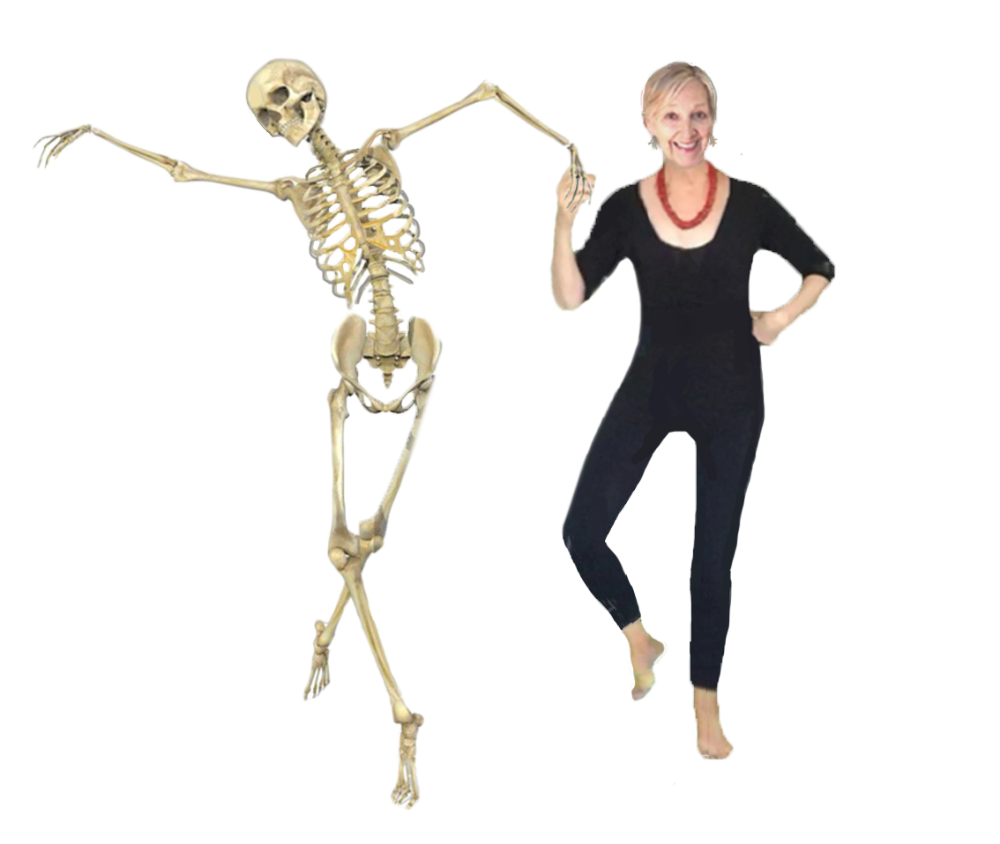👣 Meet your Feet
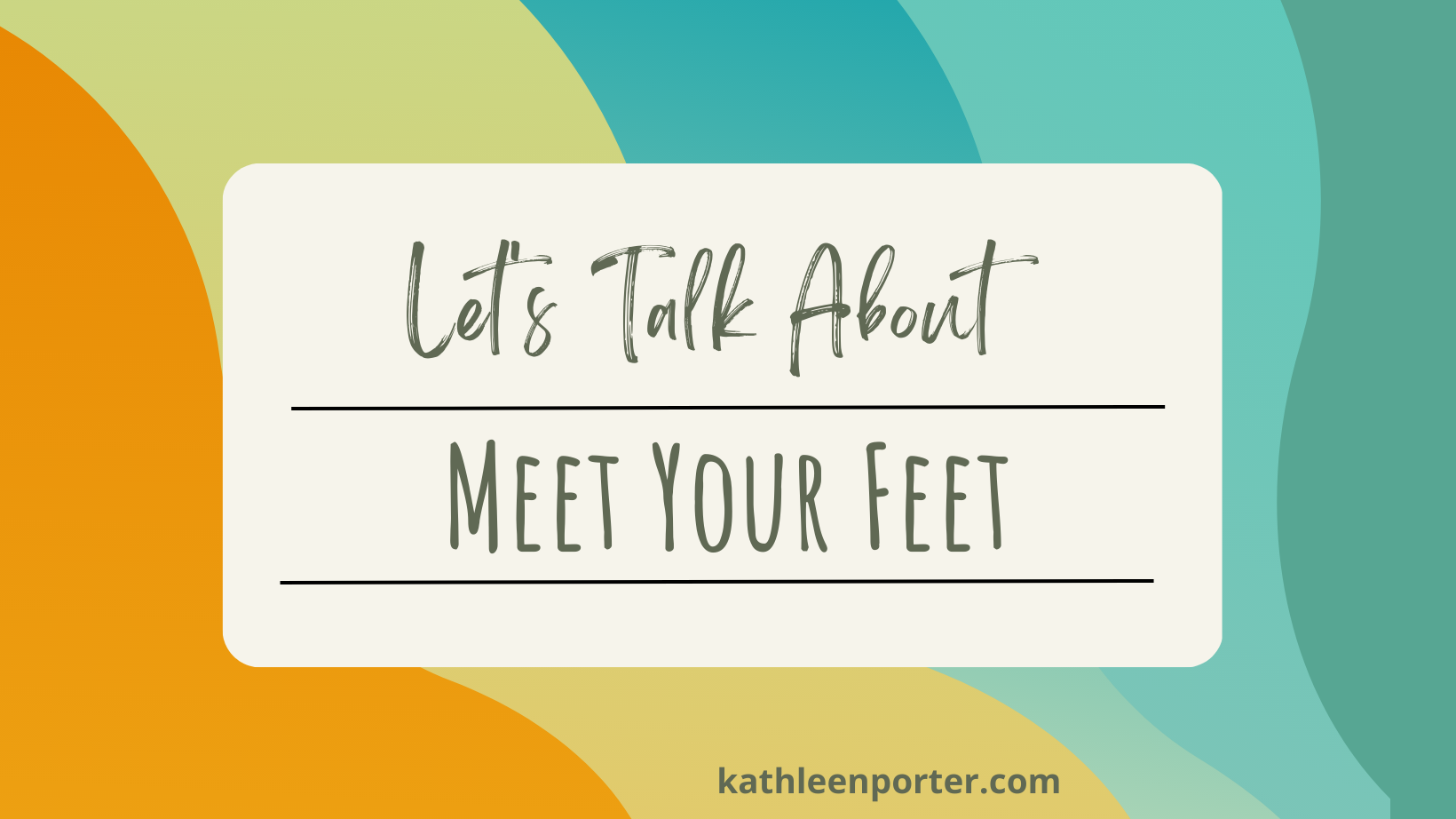
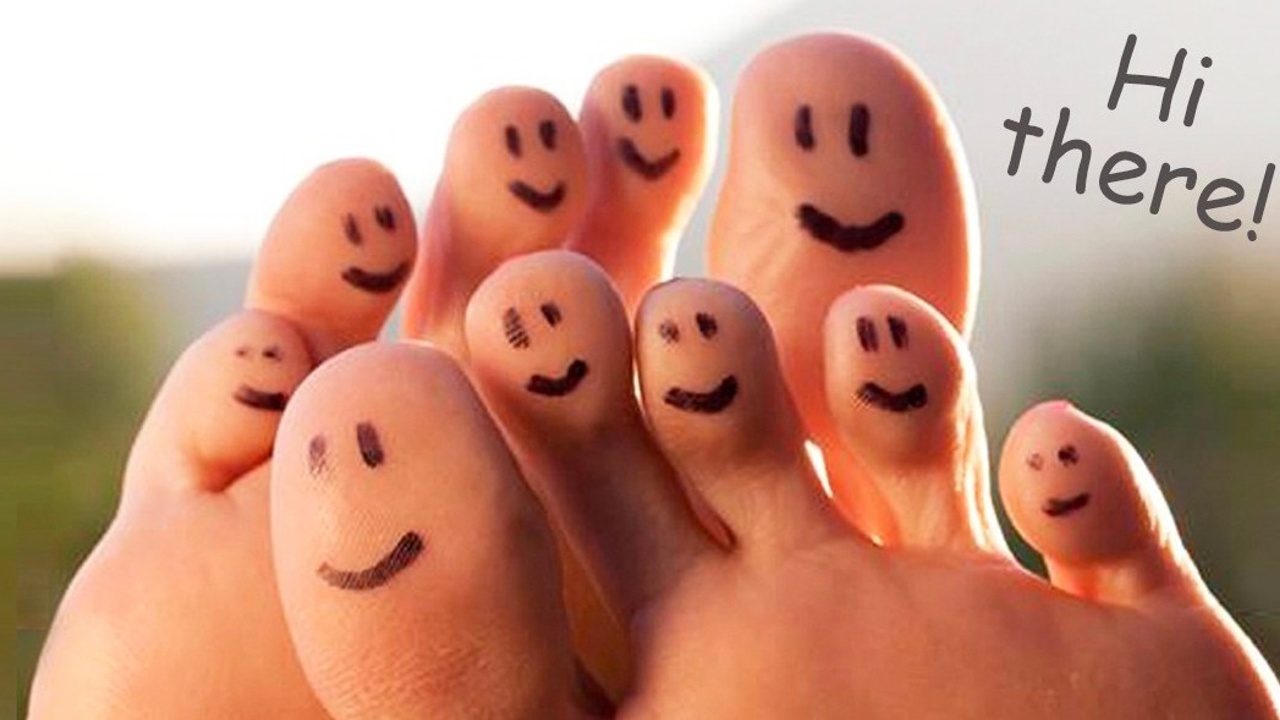
The alignment of your feet is more important than you may have ever imagined!
Let's start with the foundation and build upward, as with any other architectural structure.

The misaligned foot on the left illustrates the phrase "caught flat-footed"—ill-prepared and not up to the job.
Our feet's purpose is to be the platform that supports us and our entire body. When all 26 bones in each foot are aligned correctly, ground-reaction forces are activated for buoyancy when we walk, run, jump, dance, and leap!

Naturally aligned bones, as seen on the right:
- Give shape to a well-defined arch;
- Engage muscles;
- Connect toes to the ground, ready for action;
- Support an aligned body up above;
- Allow for pain-free standing and easeful movement.
NATURALLY ALIGNED FEET MATCH THE FEET OF HEALTHY, WELL-DEVELOPING BABIES AND TODDLERS EVERYWHERE.
A pad of fat in babies' arches can give the impression they have flat feet, but the height on the top of the foot reveals the lifted arch below.
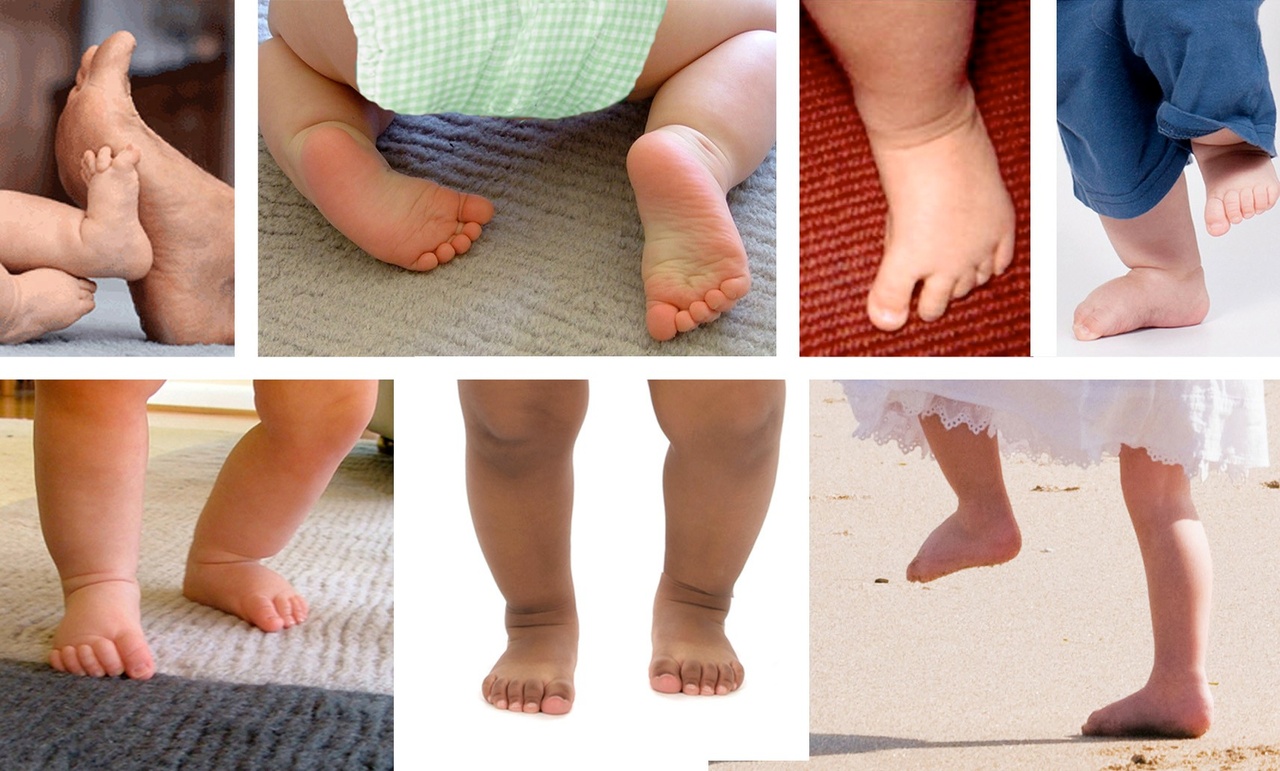
Naturally aligned feet also match the feet of people who successfully carry heavy loads on their heads (sometimes for decades) without strain. Such feet are similar to babies' feet—flexible, strong, and shaped like a kidney bean. It's the human design.

AND... so do the feet of people who age into their 70s, 80s —even 90s— with elongated spines, easy flexibility, solid strength, and enduring vitality, such as those pictured below.
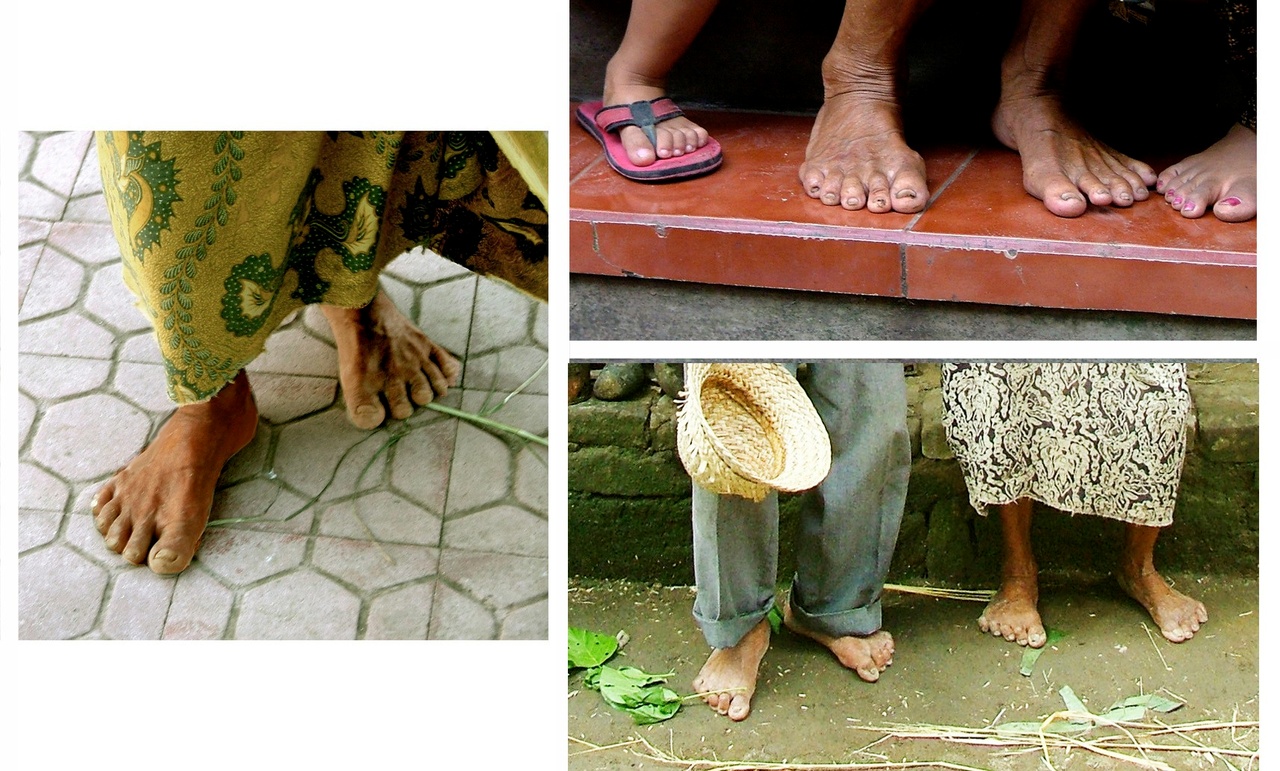
Older feet can appear beaten up after decades of active standing, walking, and bending without shoes. Yet, they still illustrate the exact characteristics of well-developed arches, actively connected toes, and toned and engaged muscles.
This is in contrast with older feet in modern societies, often confined inside restrictive shoes or exceptionally high heels.

The six pairs of feet on the left (above) are young, but if they are not reshaped in the years ahead, they will all end up with similar distress seen in the old feet on the right. Bunions and hammertoes are two of the most common problems.
Want to learn how to reshape your own feet? READ ON!
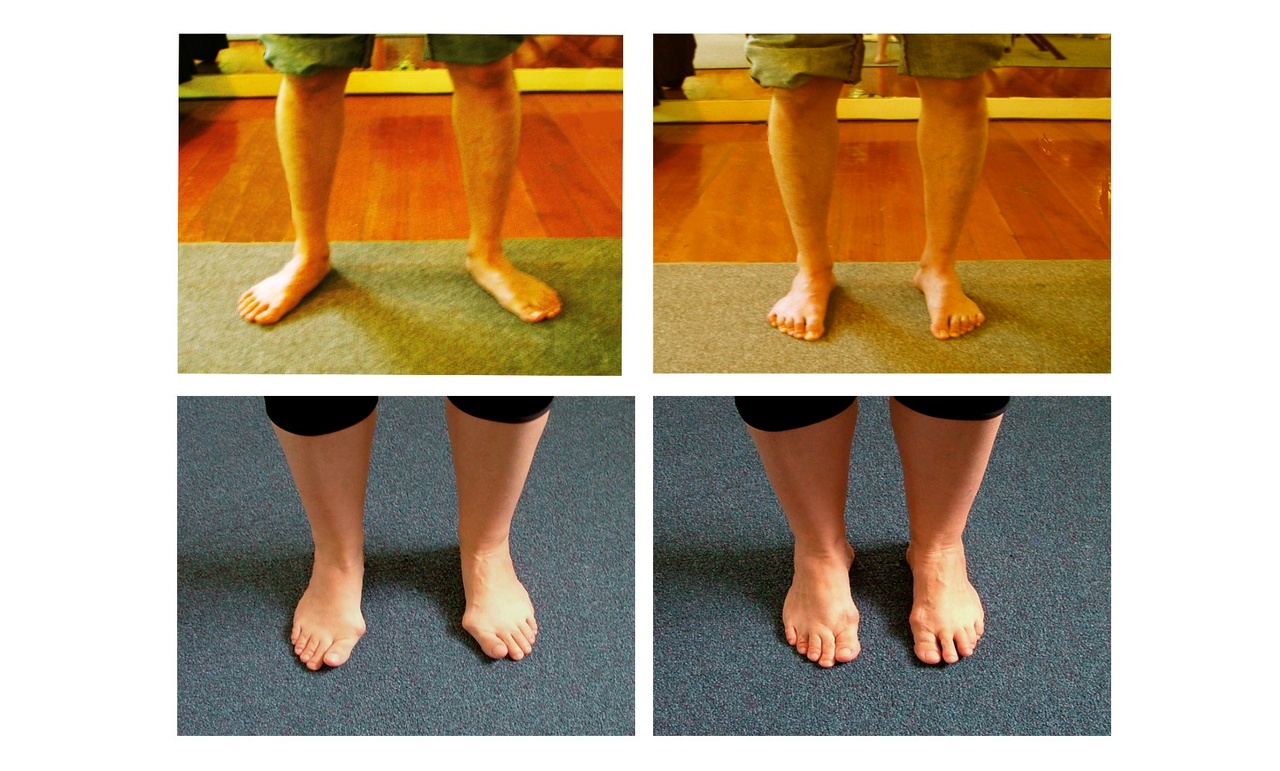
The feet pictured above, in the upper left, show pronated ankles and flattened arches. The upper right photo was taken only moments later after this young man had learned how to rearrange the bones of his feet so that they could support strong, engaged toes, feet, and ankles.
The woman pictured in the lower left photo had been told she needed a bunionectomy. Soon after the "Before" photo was taken, the bunions disappeared. Her collapsed, distorted feet were now aligned, strong, and connected.
To be clear: this is not a quick fix, but it is the fix that addresses the root cause of these problems. Building the muscle tone supporting the bones in their natural position takes time. Regular exercise is required, not just of the feet but also of the legs.

Steps 1 through 4 (above) illustrate how to place the bones of your feet in their natural relationship with each other.
The step-by-step details for aligning your feet are described in a handout you can download here for reference.
REMEMBER: This is NOT a quick fix—but guess what? There isn't one!
However, you can begin today to take the necessary steps that I and many others have taken, including exercises based on daily actions such as HOW you bend or get up and down from a chair—all done in new ways that will build muscles in your feet and legs that will strengthen your arches and reshape your feet.
Visit my Meet your Feet podcast for the try it on tips.
While you'll hear some of the same information repeated, the importance of your feet in supporting a healthy body is IMMEASURABLE, and much of it bears repeating.
May you have happy feet!
Kathleen
Ready to be pain-free?
Get tips for pain-free living with natural posture and more.
We hate SPAM. We will never sell your information, for any reason.
